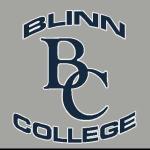History
Blinn College was founded as Mission Institute in 1883. It was strictly for male students until the institute began admitting females in 1888. The school experienced its first name change in 1899 when it became Blinn Memorial College after Christian Blinn donated a substantial amount of money to make it possible to operate the school. In 1927, the institute became a junior college that merged with Southwestern University of Georgetown, Texas.
In 1934, the institution became a nonsectarian junior college and took on its current name. The college severed its connection with Southwestern University in 1937. An election was held to levy taxes in order to form a public junior college district, creating the first junior college district in Texas owned by the county. Today it is one of the largest community college districts in the state of Texas.

